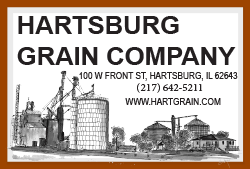|
 Agriculture represents a
nearly $8 trillion industry globally, according to the World Bank,
so the application of advanced technology in this sector has
potentially profound implications: for the planet, for people and
for investors. Agriculture represents a
nearly $8 trillion industry globally, according to the World Bank,
so the application of advanced technology in this sector has
potentially profound implications: for the planet, for people and
for investors.
“Enabling technologies, such as smart sensors, predictive analytics,
automation and CRISPR gene editing, are becoming cheaper and better,
and most importantly, are affecting not just one area, but virtually
every stage of crop production,” says Lynch.1"
Here are ten of the newest game changing technologies that are
rocking the world of agriculture:
1. Powerful sensors on planes detect crop nitrogen with high
accuracy
Predicting the amount of nitrogen needed by a particular crop in a
particular year is tricky. The first step is understanding crop
nitrogen status in real time, but it’s neither realistic nor
scalable to measure leaf nitrogen by hand throughout the course of a
season.

In a first-of-its-kind study, a University of Illinois research team
put hyperspectral sensors on planes to quickly and accurately detect
nitrogen status and photosynthetic capacity in corn.
“Field nitrogen measurements are very time- and labor-consuming, but
the airplane hyperspectral sensing technique allows us to scan the
fields very fast, at a few seconds per acre. It also provides much
higher spectral and spatial resolution than similar studies using
satellite imagery,” says Sheng Wang, research assistant professor in
the Agroecosystem Sustainability Center (ASC) and the Department of
Natural Resources and Environmental Sciences (NRES) at U of I. Wang
is lead author on the study.
The plane, fitted with a top-of-the-line sensor capable of detecting
wavelengths in the visible and near infrared spectrum (400-2400
nanometers), flew over an experimental field in Illinois three times
during the 2019 growing season. The researchers also took in-field
leaf and canopy measurements as ground-truth data for comparison
with sensor data.
The flights detected leaf and canopy nitrogen characteristics,
including several related to photosynthetic capacity and grain
yield, with up to 85% accuracy.
Wang explains, “Under our approach, we can detect the nitrogen
status of the crop and make some real-time adjustments for the
agricultural stakeholders. MRTN provides recommended nitrogen
fertilization rates based on the economic tradeoff between soil
nitrogen fertilizer rates and end-of-season yield. Our
remote-sensing approach can feed plant nutrient status into the MRTN
system, enabling real-time crop nitrogen management. It can
potentially shift the current recommendations based on pre-growing
season, soil-centric fertilization to a diagnosis based on real-time
plant nutrition, improving agroecosystem nitrogen use efficiency.
2”

In addition to applying needed nitrogen to the plants, this
technology helps keep nitrogen out of runoff water that travels down
our streams and rivers and ultimately contributes to dead zone areas
in the oceans.
“Essentially, you can't manage what you can't measure. That is why
we put so much effort into this technology.2”
2. Internet connected sensors
"Monitoring of the crop field in conventional farming requires
intensive labor, physical equipment, time, and effort. IoT (the
Internet of Things) technology provides an alternative to these
traditional methods. An IoT device contains one or more sensors that
collect data and provide accurate information via mobile
applications or other means in real-time. These sensors perform
countless activities, such as soil, temperature & humidity sensing,
plant & livestock tracking, and more. It also facilitates remote
monitoring of farms, providing greater convenience to farmers.
Further, new irrigation systems utilize IoT sensors for automation
of the delivery of water to crops. These constitute
evapotranspiration sensors, on-site soil moisture sensors, rain
sensors, and several others. Startups are developing innovative
sensor solutions that combine IoT technology with drones, robots,
and computer imaging to increase the agility, accuracy, and
precision of farm processes. These send on-time alerts and improve
the response time for areas that need attention.3"
All of these sensors are connected to hubs which coordinate the
incoming data via various types of internet connections, including
fixed and mobile wireless, WIFI, DSL, cable and fiber optic systems.
The growth of the wireless internet industry, for the most part,
makes all of this possible.
Expect this type of automation to grow and influence agriculture
greatly in the future.
3. Artificial intelligence
Having various and many internet connected sensors in an
agricultural setting provides a great deal of data which if it were
not for developing Artificial Intelligence, would add to instead of
relieving a farmer's work load. AI gathers, collates, corroborates
and interprets collected sensor and internet data to give the farmer
an interpreted picture rather than a mass of loose uninterpreted,
dissimilar and unrelated data.

"Incorporating artificial intelligence in agriculture provides
farmers with real-time insights from their field, allowing them to
be proactive. AI offers predictive insights for forecasting weather
data, crop yield, and prices, thereby helping farmers make informed
decisions. Chatbots, like a farmers’ Alexa, give suggestions and
input recommendations to farmers. AI and ML algorithms automate
anomaly and disease recognition in plants and livestock. This allows
timely detection and corrective response if required. Biotechnology
also deploys ML algorithms for gene selection recommendations.
Further, AI provides easy access to finance to creditors who are
denied mainstream credit. Startups are exploiting AI in several ways
to come up with innovative solutions that improve overall
agricultural quality. For example, harvest quality vision (HQV) is a
recent agritech innovation that scans and determines the quality and
quantity of fruits and vegetables.3"
AI can be setup to respond to sensor input with pre-programmed
policies that make it appear that the computer is "making decisions"
about what reaction should be made given a certain correlation of
data. As AI continues to develop, large collected data sets will
further enable "the computer" to increasingly appear to be making
decisions on its own.
4. Precision agriculture
Common practices of farming in the past meant that farmers used the
"we always did it this way" traditional method of timing, measure
and schedule of fertilizer and pesticide application which did
little to contain costs or produce better yields. With a growing
focus on increased profits instead of myopic focus on increased
yield, precision agriculture provides a better model.
"It is a method in which farmers use exact amounts of input, such as
water, pesticides, and fertilizers, to enhance the quality and
productivity of yield.
3"
Precision application of these inputs produces better results.
"Different tracts of land across the field have different soil
properties, receive different sunlight, or have different slopes.
The same treatment for the whole farm, thus, is inefficient and
leads to a wastage of time and resources. Consequently, many
startups are developing solutions in precision agriculture to
improve profitability while addressing sustainability challenges.
3"

Coupled with sensors, internet connectedness, field mapping and
methods of imaging, precision agriculture becomes a measured science
instead of haphazard guesswork to raise profits and better contain
costs.
5. Agricultural robotics
Labor shortages are both local and national problems on the farm. It
is becoming increasingly difficult to find applicants for boring,
repetitive manual labor jobs. Many of these jobs need to be done
under inhospitable conditions and are often dangerous.
"So, startups are
manufacturing agricultural robots to assist farmers with numerous
farm operations, including fruit-picking, harvesting, planting,
transplanting, spraying, seeding, and weeding. Farmers are
increasingly relying on robots to automate repetitive tasks in the
field. They deploy smart agricultural machines, such as GPS-enabled
autonomous and semi-autonomous tractors for harvesting. Tractors
also come with auto-steer technology for easier navigation across
the field.
[to top of second column] |

Moreover, robots are used in
automated systems in livestock management as well. This includes
automated weighing scales, incubators, milking machines, auto
feeders, and many more. Robots allow farmers to focus more on
improving overall productivity, without having to worry about slow
farm processes. They also prevent human-induced errors and provide
convenience through automation.
Canadian startup Nexus Robotics develops Le Chevre, a robot that
detects and removes weeds from fields. The robot makes use of deep
learning algorithms and cameras to differentiate between weeds and
crops. This enables the robot to correctly identify the weeds, which
are then removed without damaging the crops. It also collects data
about the growing conditions of the crops and enables farmers to
leverage the data into making informed decisions.
3"
Expect this area of ag technological automation to continue to
develop and grow as the migration of the population to urban areas
continue.
6. Drones and aerial imaging
If you don't know what is going on, you can't make adjustments and
avoid costly setbacks. So the area of mechanized imaging continues
to grow and develop.
"(D)drones, also known as unmanned aerial vehicles (UAVs), help
farmers overcome this hassle in an effective way. Drones collect raw
data which translates into useful information for farm monitoring.
Drones equipped with cameras facilitate aerial imaging and surveying
of near and far-stretched fields. This data optimizes the
application of fertilizers, water, seeds, and pesticides. Moreover,
drones along with GPS technology, are used for livestock tracking,
geofencing, and grazing monitoring.

They fly over fields to capture
images that range from simple visible-light photographs to
multispectral imagery which helps in the analysis of crop, soil, and
field. One drawback is they are not fit for poultry monitoring, as
birds tend to get frightened by their movement. However, for others,
like cattle or livestock monitoring, grazing monitoring, and crop
cultivation, they are a cost-effective and invaluable tool for
farmers to survey their lands. Startups are also working on drones
capable of measuring the chlorophyll level, weed pressure, mineral
and chemical composition of soils.
3"
7. Ag Biotech
"A lot of crop yield gets wasted due to pests and plant diseases.
Although agrochemicals are utilized in fields, they are not the best
solution when it comes to sustainability. On the other hand, the
application of biotechnology in agriculture improves the quality of
crops and livestock. Scientific techniques like plant breeding,
hybridization, genetic engineering, and tissue culture facilitate
the identification of better traits in plants more rapidly.
CRISPR-Cas9 is a genome editing technology that allows high target
specificity with improved speed and precision. It produces
transgenic plants with desired qualities like disease tolerance,
drought tolerance, pest resistance, and high yield capacity. This
enhances the profitability of farm production. Startups also
leverage agri-biotech methods to provide solutions such as
biopesticides, bioherbicides, biofertilizers, and bioplastics for
fields. These solutions address soil toxicity concerns and ensure a
minimal negative impact on the environment.
3"
Gene manipulation has helped lower the rate of pesticides necessary
for adequate protection, developed higher yielding hybrids, as well
as helped keep up with growing and changing threats to crops.

8. Regenerative agriculture
Known damages happen to the farm every time a crop is planted or
harvested. "Conventional farming practices lead to long-term erosion
and crusting of soil. Often, the plowing, tilling, and overgrazing
don’t allow much time for the soil to revive before the next
cropping season. Regenerative agriculture, on the other hand, causes
minimal soil disturbance while focusing on improving soil
biodiversity and topsoil revival. It involves different practices
like no-till farming, reduced tillage, crop rotation, and more. For
example, cover crops are planted to cover the soil between cropping
seasons to restore soil fertility. Further, regenerative farming
facilitates fields to act as a carbon sink through sequestration.
This leads to fewer carbon emissions into the atmosphere and a
lesser negative impact on climate change.
3"
9. Advances in yield monitoring and yield prediction technology
Built-in and add-on systems for harvest yield monitoring have been
available for some time, and have continued developing to produce
detailed maps of field productivity on a micro level. The combine
senses the real-time yield of each row and square foot of the
acreage as it harvests. Computer analysis software provides modeling
for next season fertilizer and pesticide application for higher
productivity and yields.
These "New technologies will allow farmers to quickly and accurately
predict yields before crops are harvested. With accurate yields,
farmers will be able to find buyers for all of their harvest,
eliminating food waste and increasing profits. Furthermore, yield
monitoring technology will help inform the following year’s variety
selection and yield.4"
10. Field mapping
"According to BusinessWire, the global digital agriculture market is
expected to record a CAGR of 9.9% between 2020-2021, and field
mapping will see the largest growth. It’s no surprise, since field
mapping allows for more accurate planting, spraying, and harvesting.4"
Field mapping records soil, slope and drainage information for each
square foot of the farm acreage, as well as prior year yield
characteristics. Information is king, and the more informed the
producer is, the more precise decisions can be made and contained
costs to bring about higher profits.

-----
Conclusion: Growth in ag technology is focused on producing
better management practices, but requires continued investment and
education, and higher attention to the data and its interpretation
in order to bring about better results. The best outcomes would be
lower labor costs, higher and more consistent yields,
environmentally sound practices and a better night's sleep for the
informed confident producer.
Sources:
1 - Barclay's "AgTech
Nears a Tipping Point "
https://www.cib.barclays/our-insights/3-point
-perspective/agtechs-growth-opportunities-
ripen.html?cid=paidsearch-textads_
google_google_themes_agtech_us_
banking_agtech_nonbrand_phrase_
1596881155579&gclid=Cj0KCQjwuMu
RBhCJARIsAHXdnqPqEP_pTED146PRT
CBN7FdS7o4K7
2 - University of
Illinois College of ACES "Powerful sensors on planes detect crop
nitrogen with high accuracy," reprinted in Lincoln Daily News
http://archives.lincolndailynews.com/
2022/Feb/22/NEWS/RR030122_nitrogen.shtml
3 - StartUS Insights
"Top 10 Agriculture Trends for 2022,"
https://www.startus-insights.com/innovators-guide/agriculture-trends-innovation/
4 - Trimble "Top 10
Agriculture Trends to Watch in 2021,"
https://agriculture.trimble.com/blog/top-10-agriculture-trends-to-watch-in-2021/
|